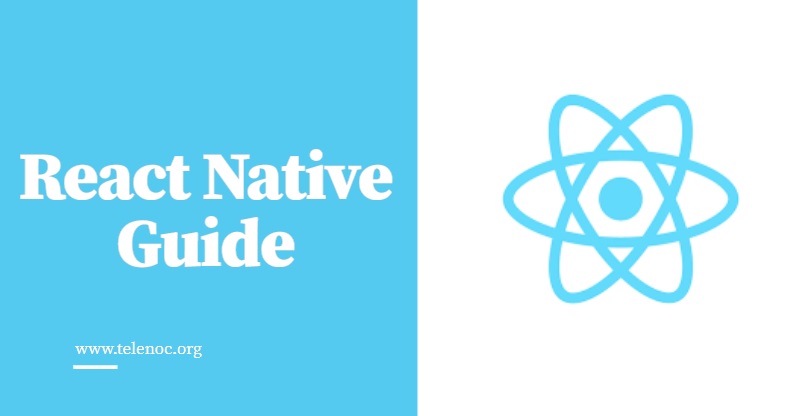React Native Guide
Set up To start this React Native guide, we should take a gander at the source. In case you’re thinking about how to begin with React Native, incline toward Facebook. Very much like with make respond application, their other splendid commitment to the local area is the standard generator alongside React Native order line interface, or CLI. These instruments permit you to set up a React application by running a solitary order. Get ready to trust that CocoaPods conditions will introduce. It’s very awesome, in light of the fact that CocoaPods, as an iOS bundle supervisor, allows you to utilize huge loads of outsider assets for your future iOS application. At the point when it’s totally done you’ll get a record structure as in the image above. How about we make a plunge and go through documents and catalogs that you may be seeing interestingly (I’ll center around the fundamentals to commence your task). android — in this envelope, you’ll track down an entire Android related codebase that will be utilized to bootstrap your application for Android gadgets. iOS — here is the place where you’ll discover your Xcode undertaking and every one of the records needed to bootstrap your task for iOS gadgets. config.js — it’s a default config record for Metro, which is a JavaScript bundler that accompanies React Native. .watchmanconfig — that is a config record for Watchman, an instrument by Facebook for watching changes in the filesystem. Respond Native docs suggest you have it introduced for better execution. index.js — a passage point for your React Native application sits inside. It was not difficult to foresee, as simple as anticipating that you will not discover ReactDOM anyplace inside. Since we’re chipping away at a local application, there is no report object model for what it’s worth in web applications. From this point forward we will be dealing with local perspectives and UI segments all things considered. What’s the execution for it at that point? It’s utilizing AppRegistry, an API given by Facebook, that takes our application’s root part and registers it, so the local framework can stack the group and run it. What we ought to know about at this stage is a division among compromise and delivering in React’s plan. On account of that React Native and ReactDOM we can utilize their own renderers while having a similar reconciler, given by React center. Joining thoughts of React and DOM could ring a bell — what might be said about’s Virtual DOM, one of React’s establishments? Respond Native gives a sort of comparable component which makes a tree progressive system to characterize the underlying format and makes a diff of that tree on every design change to improve the renderings. For additional perusing, look at the format motor called Yoga and how shadow tree, ViewManager, and UIManager works in RN. Climate With React.js it’s quite clear. You build up your application to work within a program and as long you’re giving performing code, it functions admirably. At the point when you’re creating in light of local gadgets you must be certain it will deal with iOS, Android or both. In this piece of this React Native guide, I’ll take a gander at the devices that prove to be useful. For Android gadgets, there’s Android Studio. For iOS improvement, you’ll need to utilize Xcode. The two bits of programming are free (Xcode works just on OS X however) yet plan for around one hour of establishment and setup measure (RN docs list every one of the means). Both are completely highlighted advancement conditions with bunches of helpful devices. The most significant is the likelihood to copy/mimic local gadgets and test your application in its regular habitat. You can browse a scope of gadgets to be certain it works entirely on every one or even module a genuine gadget and test your application straightforwardly on it. Will these two separate conditions share an entire codebase so you could truly create two local applications on the double? In part yes. By and large, about 90% of the code will be shared, however the excess 10% must be stage indicated and we as a whole need to acknowledge it. Here’s a genius tip I got when beginning with React Native — center around Android improvement, it’s in every case more blunder inclined. In the event that an application will chip away at Android, it will very likely sudden spike in demand for iOS. The standard doesn’t make a difference the other way, nonetheless. In the engine As should be obvious, there’s no Webpack config record and that is on the grounds that there’s no need (much of the time) to remember it for your advancement cycle. Babel is incorporated naturally however, so you can compose either in ES6+ or utilize the more seasoned ES5 grammar. The RN docs incorporate a rundown of upheld ES6+features. That is for JavaScript, however for this React Native guide, we need to burrow further. I’ll spread out the current standards of this system yet large changes to come very soon. New highlights will make the accompanying clarification somewhat obsolete. At the point when this opportunity arrives, I’ll give you an appropriate update. In the event that you are keen on the forthcoming changes, don’t hesitate to explore Project Fabric and follow the RN blog to keep up. I’ll keep it as short as conceivable on the grounds that giving you an itemized clarification of how React Native functions isn’t an objective of this article. Then again, utilizing any instrument without information on how it functions is never a decent approach, particularly for a designer. In this way allowed me to acquaint you with the Bridge. While utilizing React Native we are really managing multithreading. JS string is the thing that we are generally answerable for. On the other, less natural, the a side is area where local strings reside. In the middle, we have the Bridge. It’s liable for correspondence among JavaScript and local
React Native Guide Read More »




